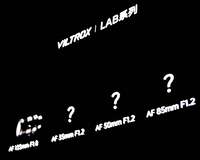Autel officially release their latest ”palm” Drone at 30 Sep. —the Evo Nano series, which has caused heated response. Most of the netizens compare the Autel EVO Nano series Drone with the DJI Mini Drone, especially the DJI MINI 2 and DJI Air 2S, because, from the specification information about the Autel EVO Nano series Drone to see, this series indeed offer some really competitive features on entry-level drones. Let us test what’s the competitive features of them.
1.Weight<250g, Folded only 142×94×55mm

At only 249 grams, the EVO Nano and Nano+ weigh about as much as a smartphone and fits almost everywhere- from the side pocket of your hiking pack to the palm of your hand.
With the increase in drone users, most of country have laws to standardize safe drone operation. It's critical in some countries that it comes under 250g. <250g, the EVO Nano and Nano+ belong to the A1 Civil Drones. It means registering EVO Nano and Nano+ with the FAA, or regulatory agencies in other countries, isn't required.
2. Come with obstacle avoidance

The Nano and the Nano+, are the first ones in Autel’s class to come with obstacle avoidance.
For the new Drone pilot, this function will give great support when flying, and avoid the Crash problem. The Nano and the Nano+ all feature three-way binocular vision sensors that enable the drone to perceive obstructions in front of it, behind it, and below it.
Compared with the DJI MINI2, the Nano and the Nano+ have won, DJI MINI2 doesn’t come with obstacle avoidance is a pity. If you are the new Drone pilot, I would more recommend you choose the Autel EVO Nano series. After all, the crash means the losses for the drone.
3.SkyLink Video Transmission, Fly Free—More Range, Less Interference.

As for the transmission tech, the Autel EVO Nano series doesn't rely on Wi-Fi communication. Fly farther while maintaining crisp, clear visuals with the all-new Autel SkyLink, the strongest image transmission system yet, which offers a transmission range of 6.2 miles, transmission quality of 2.7K/30FPS, and superior anti-interference capabilities, all while relaying stunning QHD video. It supports three Operating Frequencies: 2.400-2.4835GHz; 5.725-5.850GHz; 5.150-5.250GHz. Compare with DJI MINI2 and DJI Air 2S, it supports a more stable transmission.
4. Super attractive Camera system.
The standard EVO Nano packs a 48MP camera that can shoot 4K/30fps videos and has a 1/2-inch CMOS sensor. If you go with the Nano+, you get a 1/1.28-inch CMOS sensor that can capture 50MP photos, and a PDAF + CDAF autofocus system that is great for moving subjects. Its large aperture (f/1.9) helps with noise reduction.

Both drones come with an HDR mode to help you get rich, detailed images in any conditions, as well as a Dynamic Track 2:1 feature for tracking your subjects. Multiple cinematic shooting modes are available with the Nano drones, which let you automatically add templates and filters. Moreover, you can even add a soundtrack using the Sky app.
Specifications about Autel EVO Nano, Autel EVO Nano +, DJI MINI2, and DJI Air 2S. Though some specifications are similar, those that have changed are significant.
Conclusion:
What we like:
- Come with obstacle avoidance sensors
- Support HDR mode
- Video format support MOV files
- SkyLink Video Transmission, three Operating Frequency
What we don't:
- Flight Time is shorter than DJI’s.
- 2.No Built-in storage
- NO DNG (RAW)
Final thoughts:
For the price, we suggest Buy:
DJI MINI2 > EVO Nano > EVO Nano+ > DJI Air 2S
For the function, we suggest Buy:
DJI Air 2S > EVO Nano+ > EVO Nano > DJI MINI2
Maybe some of the people only hear about the DJI Drone, which dominates the current global drone market, but many rivals are working to develop standout products, looking for any chance to flex their muscles in niche markets.
Healthy competition will lead to a really good drone. We should be excited because Autel makes very good drones. Hoping Autel company will bring the next good product.
What do you think of the Autel EVO Nano series Drone? Comment below to let us know.













1 comment
Josh Coversmith
Looking at the the Evo drones from the point of view of video, and sadly they don’t offer 4k 60p, only 1920×1080 60p. The Mini 2 offers 2.7k 60p.
I have to say it’s great news though that DJI finally got some competition in this segment, which is hyper attractive for real estate work.